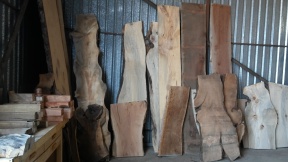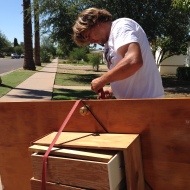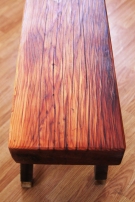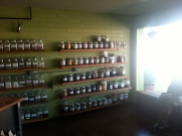Looking for the perfect piece, searching for the perfect piece…
Finding the right wood, whether looking through a dumpster, a wood pile, or some freshly sliced timber — knowing what you are looking at is an art.
Identifying the species, age, growth pattern — is it Dry? Cured? Kilned? Is it an “Old Growth” tree or Urban Forested?

Juniper From Jerome
Three main ways I get wood.
ONE
Urban forested: These are yard trees cut down or blown down, which are milled into useable slabs. Usually has one or both live edges.

An Entire Mesquite tree from Sun City

Himalayan Cedar
Walnut For Barrio Gran Reserva
Assorted woods and wood shopping.
TWO
Urban Foraged: Wood found in dumpsters, ally ways, or curbside.
With all the remodels in historic neighborhoods If you are careful you can find some real “Old growth” treasures.
Dumpster score with Miss Bane in Coronado.
In short I use many methods to get the woods I use, but I want them all to be as beautiful and sustainable as possible. Knowing what is useful, what is not, what is firewood, what will not burn.
This entire show was found wood.
THREE
Reclaimed: Found in yards, or online purchased, maybe even from a “barn wood store”
This wood is usually old, either a demolished building, or someone was storing it for quite some time.
Green Goddess house of herbs was all reclaimed wood from a Bar in New River.
Old growth Fir “found”
Kitchen and bridge in Ghent, NY made of wood found on site.



































































